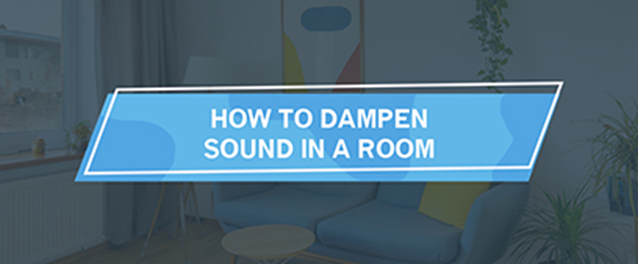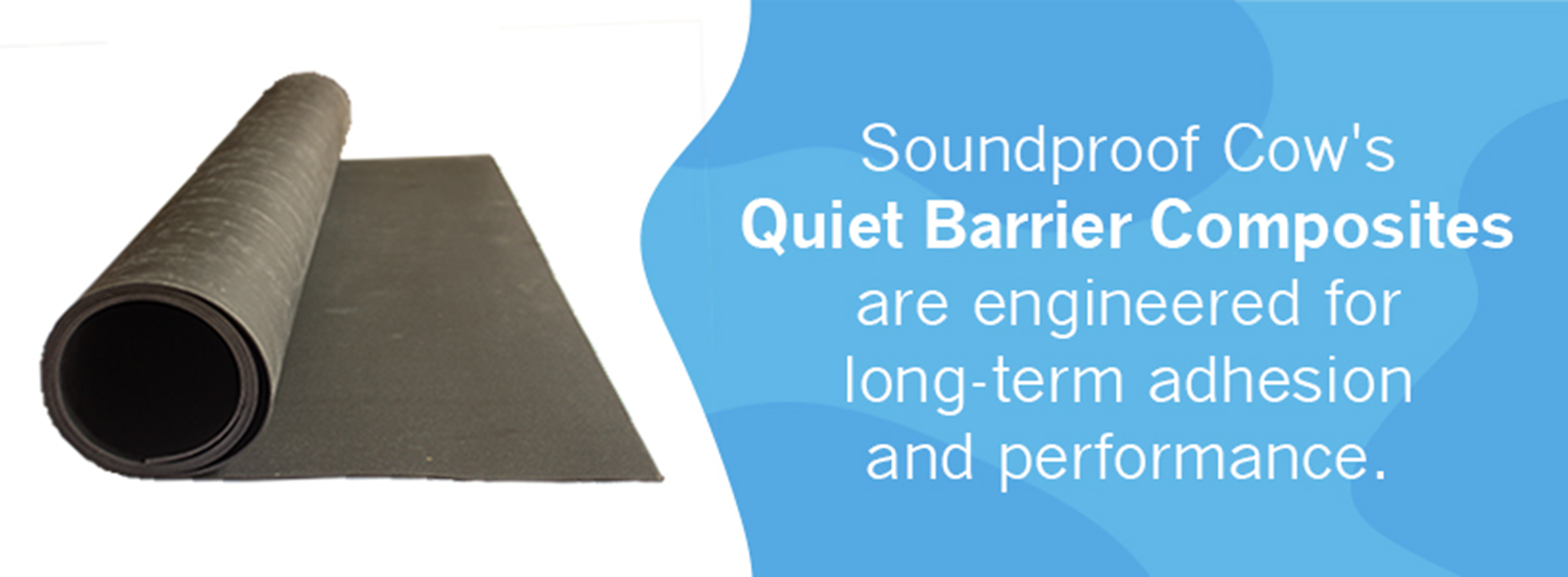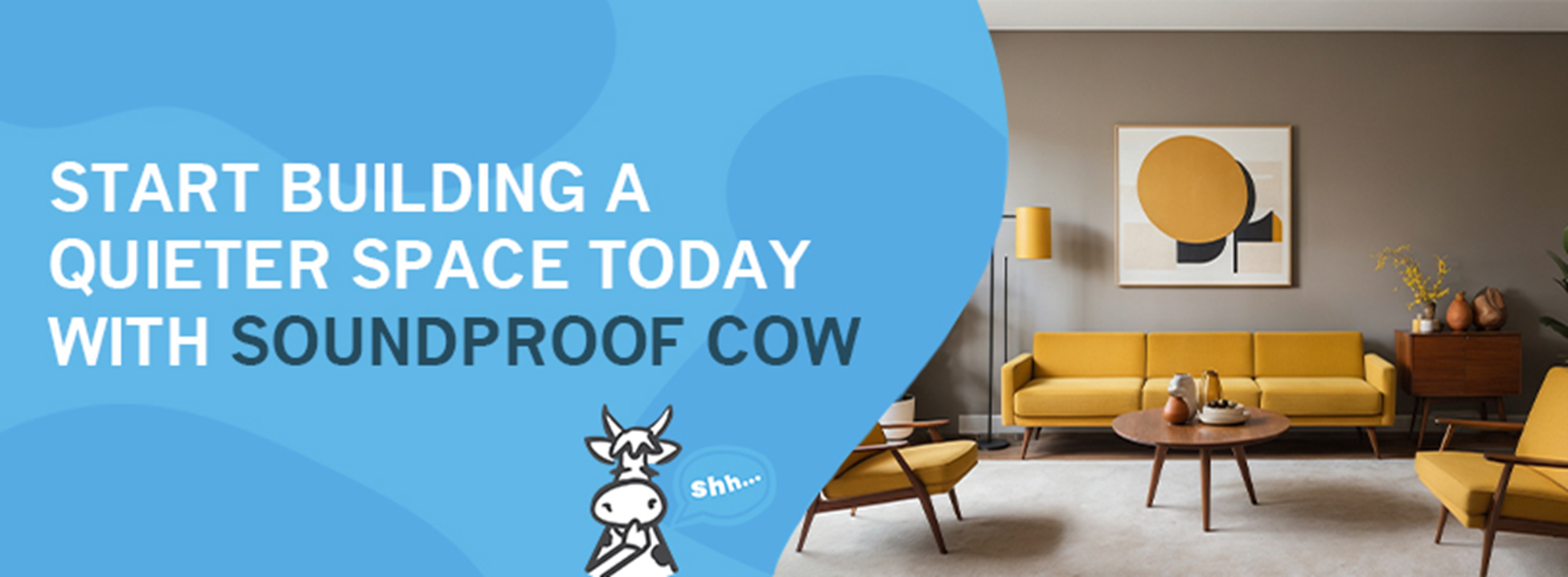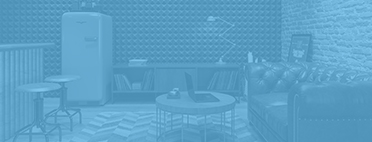
Sound dampening focuses on reducing vibration and resonance, stopping sound energy before it spreads through ducts, walls, ceilings, and floors. The result is a quieter, more controlled environment, ideal for offices, studios, classrooms, and other sound-sensitive spaces.
At Soundproof Cow, we offer high-performance sound dampening materials designed to control vibration, delivering improvements in both comfort and efficiency.
Understanding How Sound Dampening Works
Sound travels in two ways:
- Airborne noise moves through the air (voices, music, HVAC hum).
- Structure-borne noise passes through solid materials like drywall, floors, or ducts.
Traditional soundproofing materials target airborne noise. Sound dampening, on the other hand, interrupts vibration before it becomes audible. Materials like butyl, high-density polymer, and acrylic coatings dissipate sound energy as heat, reducing resonance.
The result is not just a quieter space—it is one that feels more stable, focused, and energy-efficient.
When to Use Sound Dampening vs. Soundproofing
Soundproofing and sound dampening are often used interchangeably, but they serve different purposes:
- Soundproofing blocks transmission between rooms.
- Sound dampening improves the acoustic quality and minimizes sound by reducing resonance.
If you are trying to mitigate machinery hum, HVAC noise, or mechanical reverberation, sound dampening is a practical, cost-effective approach. It can often be added without major renovation.
How to Dampen and Reduce Noise in a Room Step by Step
Creating a truly quiet space starts with controlling noise in your environment. Follow these steps to reduce unwanted sound effectively and efficiently.
Step 1: Identify the Noise Source
Determine where the sound originates. Is it airborne (conversation, HVAC, or electronics) or structure-borne (vibration from adjacent rooms or floors)?
- Airborne noise is controlled through mass and density with sound barrier materials.
- Structure-borne vibration needs dense, dampening materials like butyl, soundproofing composites, or structural isolators.
Step 2: Target the Right Surfaces
Every room has a few key areas where noise control matters most:
- Walls: Apply sound barriers under drywall or directly over existing walls.
- Ceilings: Install structural isolation between the ceiling joist and drywall.
- Floors: Use vibration-control underlayment beneath flooring to reduce impact noise transfer.
- Doors & Ducts: Add dampening panels or composite wraps to minimize resonance and contain sound.
Focusing on these surfaces ensures you control both airborne and structural sound transfer.
Choosing the Right Material for Your Application
| Material Type | Best For | Key Advantages |
| Butyl Sheets | HVAC, doors, and high-heat areas | Flexible, self-adhesive, water-resistant, and long-lasting |
| Acoustic Panels | Walls, ceilings | Reduce echo and reverberation in active rooms |
| Polymer Coatings | Ducts, automotive, marine | Spray or brush application, seamless coverage |
Soundproof Cow materials are tested to ASTM vibration standards, ensuring consistent performance and measurable results.
Step 3: Prepare the Surfaces
A proper installation begins with clean, smooth surfaces.
- Wipe down walls or panels to remove dust and oil.
- Cut materials to size before installation.
- For coatings, ensure even coverage and multiple coats to reach the recommended thickness.
Good adhesion and proper placement are essential for adequate performance.
Step 4: Apply the Sound Dampening Materials
- Press or roll materials firmly to eliminate air pockets.
- Overlap seams slightly for consistent coverage.
- Prioritize large, resonant surfaces—like the center of walls or ductwork—where sound transfer is strongest.
Soundproof Cow’s RoadBlockR and Quiet Barrier Composites are engineered for long-term adhesion and performance.
Step 5: Seal Openings and Airgaps
Once materials are installed, seal gaps around outlets and open joints with acoustic caulk.
Sound will take the path of least resistance. Ensuring air gaps are sealed will increase sound control in your space.
Product Spotlight: Soundproof Cow Sound Dampening Solutions
Soundproof Cow’s vibration control products are trusted across residential, commercial, and industrial environments. Our materials are:
- Engineered for high efficiency
- Durable in most environments
- Backed by acoustic testing
Whether you need sound dampening pads, coatings, or panels, Soundproof Cow’s team can help you identify the best material for your space and provide recommendations for installation. Call us today at 866-949-9269 to speak with a soundproofing specialist and get personalized guidance for your project.
Conclusion
Quiet spaces do not happen by accident. Follow the proper steps and use Soundproof Cow’s recommendations to add peace and tranquility to your room.
Explore our full range of sound dampening materials to start building a quieter space today.








